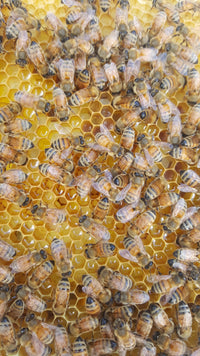Understanding Bee Swarms: What to Do and Who to Call
Bee swarms can be a fascinating, yet intimidating sight. At SAVAGE BEE-CHES, we often receive inquiries about what to do if a swarm appears unexpectedly. While we don’t offer bee removal services, we're here to guide you through understanding bee swarms, their behavior, and the steps you can take if you encounter one.
What is a Bee Swarm?
A bee swarm is a natural phenomenon that typically occurs when a single colony splits into two. However, it's important to note that sometimes an entire hive might decide to relocate if their current environment fails to meet their needs. This movement is driven by factors such as overcrowding or insufficient resources within the hive.
The Phases of a Bee Swarm
-
Temporary Clustering: After leaving their previous hive, bees don’t go straight to a new permanent location. Instead, they cluster on a nearby object like a tree branch or a fence post. This cluster is a temporary stop where they rest while scout bees search for a suitable new home.
-
Scouting: A few bees, known as scouts, venture out to find an ideal location for the new colony. This phase is crucial and can take from a few hours to several days.
-
Relocation: Once a suitable location is found, the entire swarm quickly relocates to this new site and starts building their new home.
Timing and Non-Native Status of Honey Bees
It’s also important to understand that honey bees are not native to many regions, including North America. They were introduced by European settlers and have since become key pollinators in agricultural and wild ecosystems. Swarms typically occur in the spring as temperatures warm, peaking around April. However, swarms can happen at any time of year depending on local climate conditions.
What to Do If You Encounter a Bee Swarm
If you come across a bee swarm:
-
Give them space: Most swarms are non-aggressive as they have no hive to defend. However, it’s best to keep a safe distance.
-
Observe their behavior: If the bees are simply clustering without building a comb, they’ll likely move on within three to five days. No intervention is usually necessary during this temporary phase.
-
Monitor for comb building: If you notice bees starting to build a comb, it indicates they’ve chosen a permanent location. At this stage, it's crucial to seek assistance.
Finding Help for Bee Removal
-
For accessible, non-structural locations: Join the San Diego Beekeeper Association Facebook group. Posting a picture and description of the swarm may attract local beekeepers who can remove the swarm for free or a small fee, offering a great alternative to expensive pest control services.
-
For challenging or structural locations: Contact a licensed bee removal service or pest management company. Costs typically range from $300 to $500, not including repairs to structures like walls or floors. Ensure you shop around as prices and services can vary significantly. We do not offer recommendations. Simple Google search "Bee swarm removal San Diego CA" will bring up a few options.
Post-Removal Tips
After the removal, it’s crucial to:
-
Seal entry points: Make sure all entrances the bees used and potential new entry points are securely sealed to prevent future swarms.
-
Remove residual hive material: Ensure any remaining comb and hive material are thoroughly removed and cleaned to avoid attracting another swarm.
Understanding and properly managing bee swarms can ensure the safety of both the bees and the individuals encountering them. At SAVAGE BEE-CHES, while we don’t remove bees ourselves, we're committed to helping educate our community and guide them to the right resources. Remember, bees play a vital role in our ecosystem, and their preservation is crucial.
For more information or to explore our range of bee-related products, visit our website. Let’s continue to support our buzzing friends in a way that keeps both them and us safe!



Leave a comment